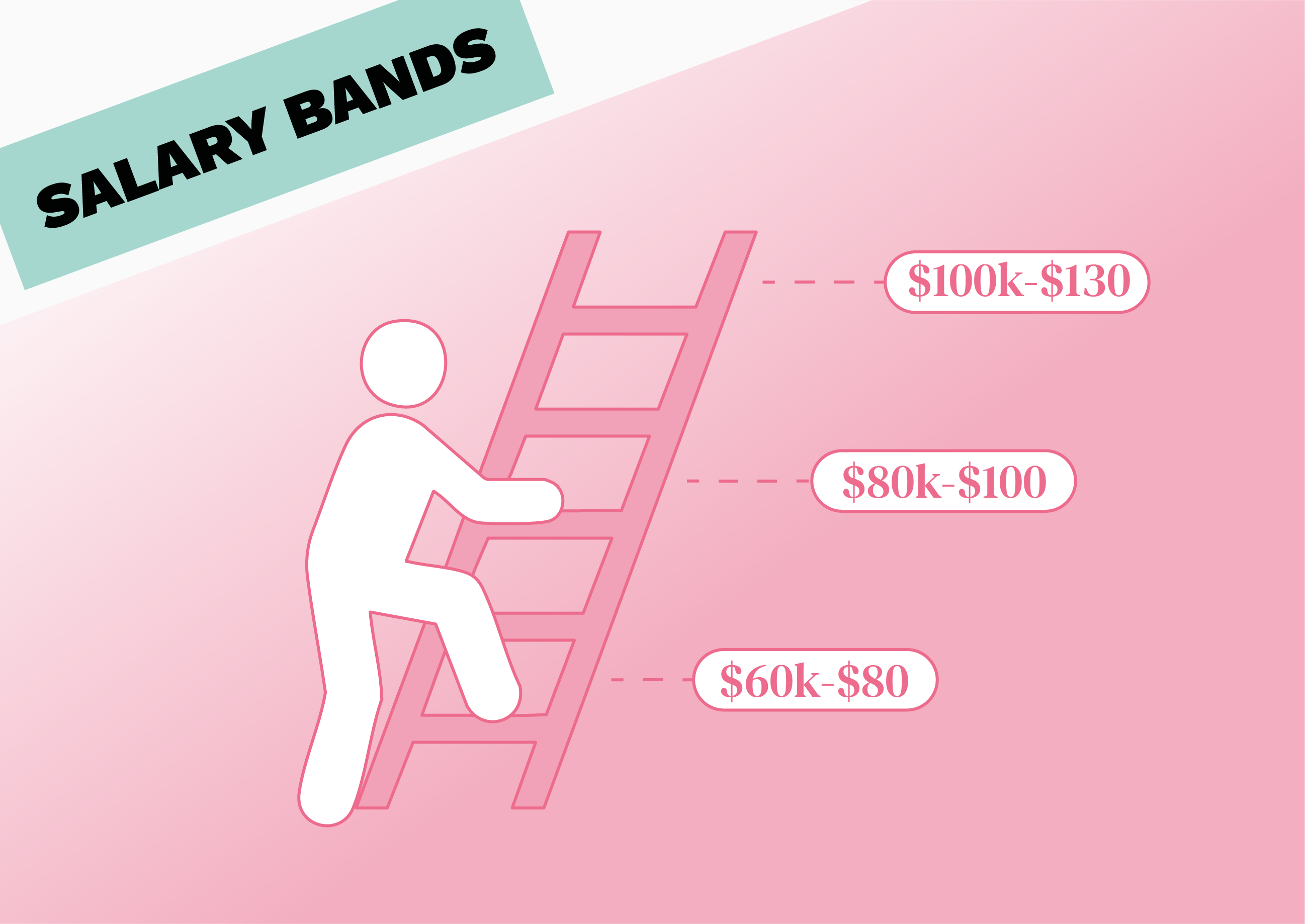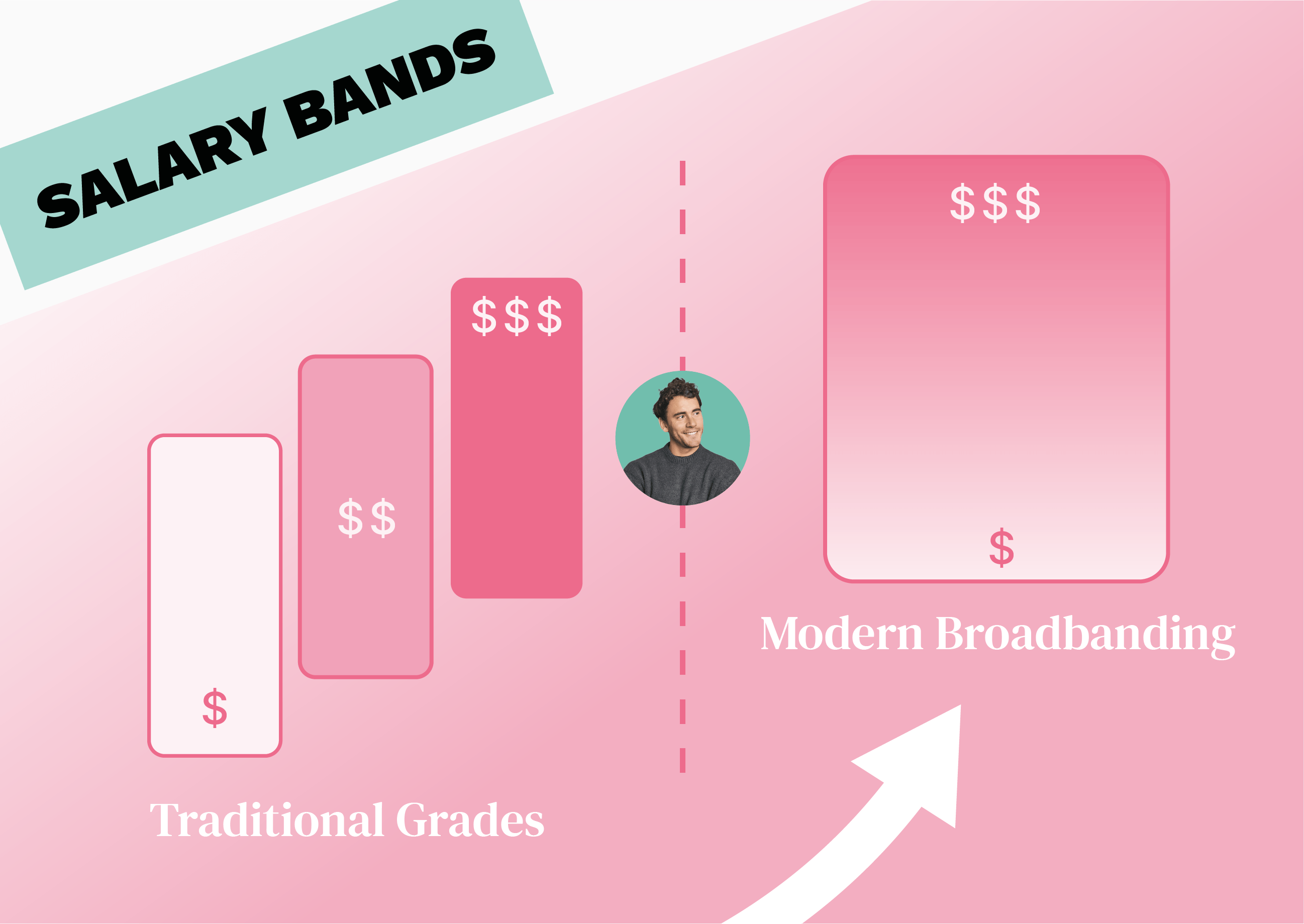Salary Bands: What are they and why should you care?
We all know that money matters. So it comes as no surprise that compensation and benefits are still the number one priority for job seekers. Despite this, many HR teams still don’t have a structured strategy in place for setting pay rates. And companies without these structures in place could be missing out in terms of both attracting top talent, and driving pay equity and transparency.
The solution? Salary bands.
You might also see these referred to as pay bands, pay ranges, salary ranges, and more — but they all essentially mean the same thing. In short, your salary bands define what your company is willing to pay for each job at each specific level.
In this article, we’ll take a closer look at why salary bands are becoming the go-to tool for forward-thinking HR leaders, plus how Figures can make it easier and quicker than ever before to create effective salary bands that help drive business success.
What are salary bands?
At Figures, we define salary bands as:
“How much a company is willing to pay for each job at a given level of execution.”
For example, your salary band for a mid-level product manager might be a minimum of €50,000 to a maximum of €70,000. For a senior-level product manager, your salary band might be €60,000 to €90,000.
(Note: the figures above are made up and not reflective of any real market!)
A company’s salary band structure might be based on a lot of different factors, including:
- Your overall compensation strategy
- Company positioning compared to the external market
- Budgetary constraints
Once finalised, it’s a good idea to embed salary bands into your compensation policy — but remember to review and update your figures regularly.
Why should your organisation use salary bands?
It’s no longer enough to state that you offer a competitive salary — because that can mean very different things depending on each candidate’s expectations, job history, gender, and more. Instead, switching to salary banding allows you to drive pay equity by focusing the conversation on the role, rather than the individual.
What are the advantages of using salary bands?
If you don’t currently have a structured salary band system in place, there’s no denying that setting it up will be a lot of work for your HR and compensation team. But here at Figures, we strongly believe that it’s worth the effort. To prove it, here are some of the top reasons why using salary bands is a great idea.
Driving pay equity
If you don’t have a salary band structure in place, how do your HR team and hiring managers decide how much to offer each candidate? There are a number of other factors you could consider, of course — but you need to tread carefully.
For example, while basing a salary decision on a candidate’s pay history used to be common practice, it’s simply not good enough any more, because it has been shown to perpetuate the gender pay gap.
But are salary bands the answer? Yes, according to our research: we’ve found that using them as part of your compensation policy can help to drive equal pay — and who doesn’t want that?
Promoting transparency
Building an openly available salary band structure can help foster trust and engagement, because employees feel their skills are valued on an equal basis.
Plus, as regulations like the EU Pay Transparency Directive come into force, companies will need to provide information about the salary ranges they pay for each specific role within their job descriptions.
If you haven’t yet started preparing for these regulations, the best time is right now — and building pay bands that keep your salary decisions fair and consistent is a good way to start.
Reducing bias
Without salary bands, unconscious bias can creep into salary negotiations.
But when you have a formalised process for setting salaries for each specific role and level, you can improve trust by showing potential new hires (and existing employees) that their salaries are being set consistently and fairly.
Attracting, retaining and engaging talent
We already know that compensation is the most important factor for job seekers. And clearly stating a pay range for each role you’re advertising shows potential candidates what you’re willing to pay for their skills.
It also means that you won’t end up interviewing candidates whose salary expectations are out of line with yours. They’ll be able to make a truly informed decision based on your offer, instead of wasting both your time and theirs — a win-win situation, if you ask us.
Improving budget planning
Without clear salary bands, it can be challenging to forecast upcoming expenses. That’s because when each manager is using their own discretion to decide who gets paid what, it’s very hard to understand how much each pay review cycle might end up costing.
Defined pay bands make it easier to calculate the maximum amount you’d need to allocate, assuming all employees progress to the next band at their upcoming review.
What are the disadvantages of using salary bands?
OK, OK, we admit… So far, we’ve been making it sound like salary bands are the dream solution for every organisation. But there must be some downsides too, right? Honestly, there aren’t many disadvantages to using salary bands — but here are a few things you should be aware of.
Developing salary bands takes time
Correctly setting the right salary band for each position and level takes time. In addition to the experience required for each role, you’ll also need to take into account factors like your industry, location, market position and more.
The good news is that you don’t have to do it alone: Figures Salary Bands is a simple and efficient tool that can help you to build, update and share your salary bands, without grappling with unwieldy Excel sheets and messy manual calculations.
Want to learn more? Read our full guide to Figures Salary Bands to get started.
Salary bands don’t take into account commissions or bonuses
Plenty of positions include commissions or bonuses in addition to base compensation. For these roles, the advertised salary can look low, even though it’ll be significantly higher in reality.
And because salary bands only take base salary into account, it can be more challenging to advertise these roles and attract top talent if you only state a salary range on the job description.
The solution? Be transparent about all elements of your pay, not just base salary. By including information in each job description about the additional compensation that candidates can expect, you can make sure they have a full picture of what their take-home pay will look like before they decide to apply.
Existing employees might request a pay review
If your existing employees are on a heritage salary that ends up being lower than your newly advertised pay bands for the same position, you’ll need to adjust their pay. While this will certainly impact your budget, you don’t need us to tell you that it’s the right thing to do.
How do we know? Because if you’re interested in implementing salary bands, we know you want to make sure your salaries are fair and equitable — which means making the necessary adjustments.
Another important point: don’t wait for employees to bring this up. Instead, proactively address it at their scheduled pay reviews — and let employees know ahead of time that you’ll be doing this.
Driving transparency and equity with a clear salary band structure
Salary bands can promote consistency, transparency and fairness in how you handle pay — which sounds pretty good to us.
But some HR teams are (understandably) concerned about the significant amount of time needed to set up such a system, which includes manually reviewing all roles, conducting market research and setting bands for each job and level.
The good news is, Figures is here to do the hard work for you.
Want to learn more about Figures Salary Bands? Head over to our product page or dive straight in with a free demo.
.avif)




